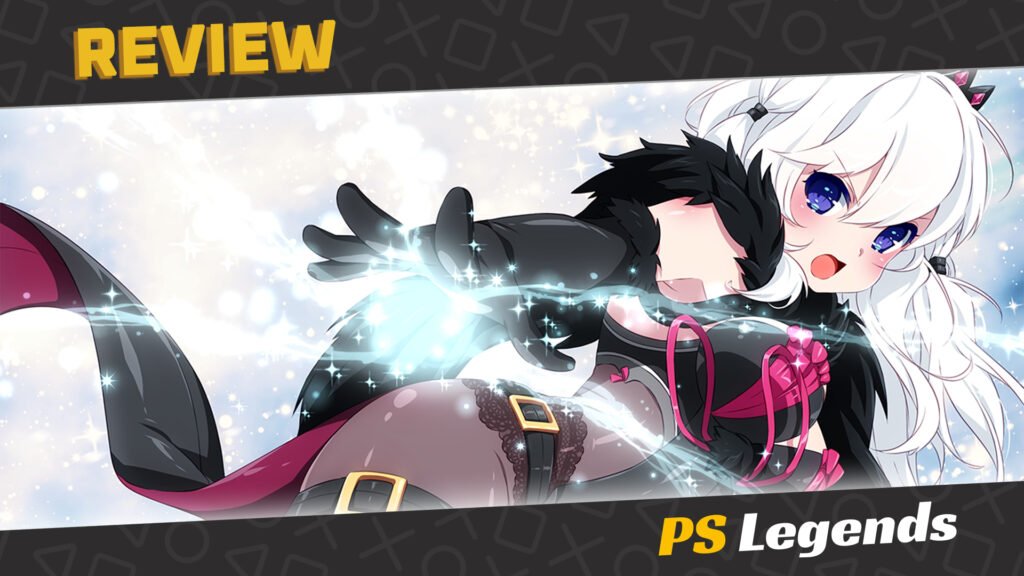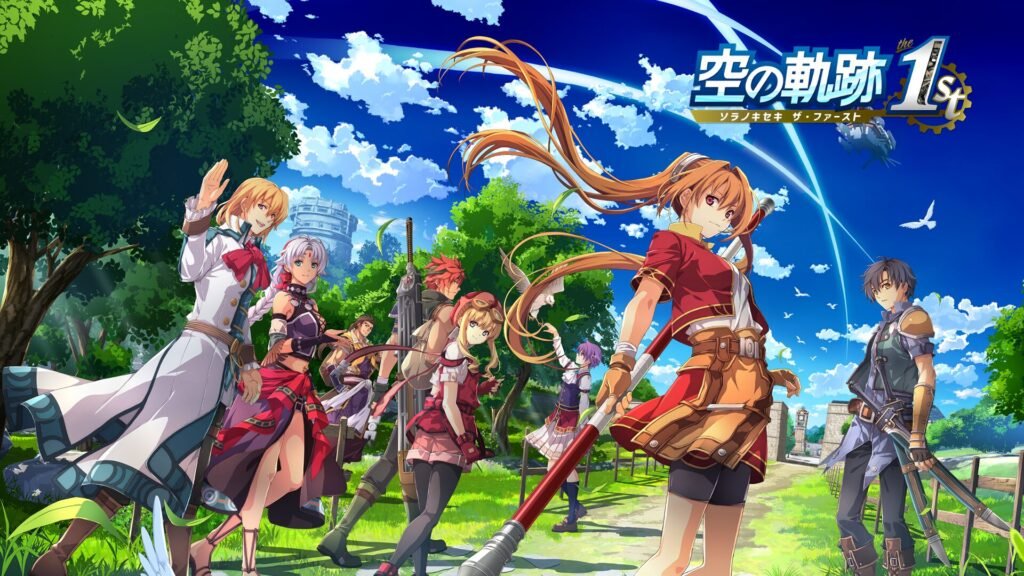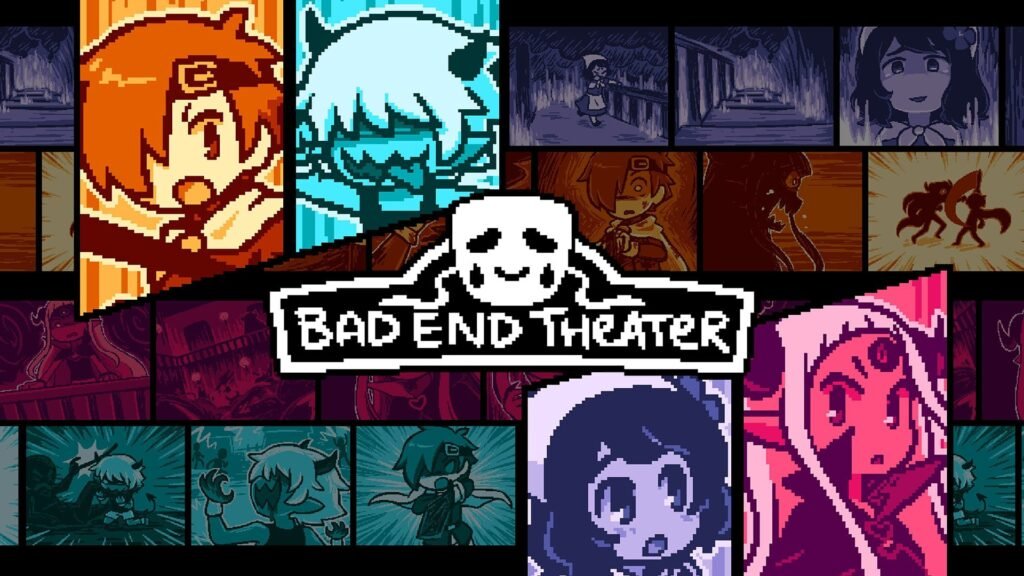We Europeans got royally screwed with the releases of the first six Final Fantasy games. I’m sure you’d find plenty of dodgy imports or bootlegs if you looked hard enough, but we never actually got a proper release for any of them, at least not for the first editions. There was a lot of xenophobia in gaming at the time, so anything Japanese getting released in the west at all was nothing short of a miracle. It was an ugly trend that continued well into the 2000s when worldwide releases became the new norm.
People began to talk about these outdated culture divides. Was the gaming industry really so insensitively petty for so long? Perhaps that’s a story for another time. Needless to say, the PSone release of Final Fantasy VI was quite the historic gaming moment. Of course, that playable PS2 demo of Final Fantasy X included also sweetened the deal and really showcased the major overhaul the series was getting, particularly in terms of visuals and sound. This made the port of Final Fantasy VI look rather pitiful in comparison. Fortunately, Final Fantasy VI would eventually get another chance to shine.
Introduction
Perhaps it was simply lousy timing, but the first many got to see of this iconic game it already looked and felt so very, very old. And yet, we played through it anyway, not from desire or enthrallment, but due to some sort of misguided brand loyalty. It takes a while to look beyond those pixels; hours of gameplay in fact, but when you do and your mind fills in those graphical gaps, you can finally see some sliver of the brilliance that a lucky few got to experience back in 1994.
The Pixel Remaster edition sidesteps most of the enhancements made since some of the other re-releases but preserves the revised controls of the previous mobile version and retains the updated script with minor alterations based on present norms. It adds a new soundtrack re-scored by Nobuo Uematsu, including several tracks with vocals that were not possible on earlier hardware. This release also adds a dedicated art gallery featuring works from all prior versions in a sort of homage to the game’s history.

Story
Around one thousand years ago, three deities, collectively known as the Warring Triad, descended upon the world and battled for dominance. During the ‘War of the Magi’, these gods transformed the most loyal humans and animals into creatures called Espers, granting them magical powers and near-immortality at the price of their eternal obedience.
The Triad realised that their war was destroying the human world and so petrified themselves for their sins, with their final wish being that the Espers prevent their power from being awakened and abused. The Espers created a new dimension where they could hide away the remnant statues of the Warring Triad and live peacefully away from the remaining humans who came to fear their magic. As such, the humans came to rely on technology to thrive instead, and over time, magic faded from memory.
At the game’s opening, the Gestahlian Empire has taken advantage of the weakening barrier between the human and the Esper worlds, capturing several Espers in the process. Using these Espers as a power source, the Empire has created “Magitek”, alchemic technology which combines magic with machinery, and in rare cases, infuses humans with magical powers. The Empire is opposed by the Returners, a rebel group who hope to weaken the Empire’s iron grip on the world.
In the present day, two Imperial soldiers accompany a young, female sorceress on a march over snowy hills. The group is sent to raid the neutral city of Narshe using Magitek Armor following reports of a frozen Esper recently discovered in a mine shaft near the settlement. In the back of the newest mine, they find the Esper, however the creature swiftly vaporises the two soldiers and their Magitek Armor.
The green-haired sorceress survives the encounter and awakens in the home of one of the Returners, who explains the girl was previously being controlled by the Empire using a device known as a ‘slave crown’. The young woman has no knowledge of her identity other than her name: Terra. The Narshe guards arrive to arrest Terra, but she flees back into the mines and eventually escapes with a Returner agent and treasure hunter named Locke.
The pair travel south to Figaro Castle, the seat of rule of a neutral desert nation on seemingly friendly terms with the Empire. Terra meets Figaro’s charming king, Edgar, who is revealed to be an ally of the Returners. Edgar attempts to hide Terra from the Imperial ambassador, Kefka Palazzo, who Terra remembers as the man who placed the slave crown on her. The plan fails, and the trio are forced to flee from the Empire, recruiting other scattered members along the way as well as recruiting new allies, until they have an army capable of standing up to the Empire.
You’ll be playing as the Returners, a rebel group comprised of multiple active and inactive members who seek to overthrow the oppressive Gestahlian Empire ruled by the Emperor Gestahl and his insane court mage Kefka. Because of the regular shifts in character perspectives, it’s easy to believe that Final Fantasy VI doesn’t have one set protagonist, and I’m inclined to agree, but I think our lovely green-haired sorceress Terra deserves more credit. Her journey will not only see the Returners confront the Empire, but see Terra learn the truth about the origins of her ever-growing magical abilities.

Gameplay
Like previous installments, Final Fantasy VI consists of four key modes of gameplay: a battle screen, a menu screen, dungeon/field maps and a world map (plus its near-3D counterpart. The overworld map is a scaled-down version of the game’s world, which the player uses to direct characters to various locations. As with most games in the series, the three primary means of travel across the overworld are by foot, chocobo, and airship.
With a few narrative-driven exceptions, enemies are randomly encountered on field maps and on the overworld when travelling by foot. The menu screen is where the player utilises options such as which characters will be in the battle party, which weapons and armour they equip, the magic they learn, and the configuration of the gameplay. It can also be used to track experience points and levels.
The game’s plot develops as the player progresses through towns and dungeons. NPCs will offer helpful information, and some residents own item or equipment shops. Later in the game, visiting certain towns will trigger small side-quests. Dungeons appear as a variety of areas, including caves, forests, and larger buildings. These dungeons often have treasure chests containing rare items that are not available in most shops. Dungeons may feature puzzles and/or mazes, with some dungeons requiring the player to divide the characters into multiple parties which must work together to advance through the dungeon.
Combat in Final Fantasy VI is turn-based, in which the player selects an action from a list of such options such as ‘Fight’, ‘Magic’, and ‘Item’. A maximum of four characters may be used in battles which are based on the series’ traditional Active Time Battle (ATB) system, first featured in Final Fantasy IV. Under this system, each character has an action bar that replenishes itself at a rate dependent on their speed stat.
When a character’s action bar is filled, that character may perform one action. In addition to standard battle techniques, each character possesses a unique special ability. For example, Locke possesses the ability to steal items from enemies, while Celes’ Runic ability allows her to absorb most magical attacks cast until her next turn.

Another element is the Desperation Attack, a powerful attack substitution that occasionally appears when a character’s health is low. Similar features appear in later Final Fantasy titles under a variety of different names, such Limit Breaks and Overdrives. Oddly, I did find that brief periods of low health didn’t guarantee a Desperation Attack, and I was able to complete entire playthroughs without ever seeing one.
Characters are rewarded for victory in battle with experience points and money. When characters attain a certain number of experience points, they gain a level, which increases their stats. Unique to this entry, powerful accessories known as ‘Relics’ can be equipped by your party members. While weapons and armour mostly boost combat efficiency, Relics have a variety of uses and effects, with many able to alter basic battle commands and exceed normal limitations of the game’s systems.
Later in the game, magic may be taught to almost all playable characters through the game’s introduction of magicite and the Espers that magicite shards contain. Espers are the game’s incarnation of the series’ ‘summons’, powerful deities such as Ifrit, Shiva, Bahamut and Odin. Besides those returning from previous entries, Final Fantasy VI features around two dozen of them in total.
Each shard of magicite has a specific set of magic spells that a character can learn when they are equipped with it in the menu. If equipped for long enough, these abilities become permanently accessible, even if the magicite is then unequipped. Additionally, some pieces of magicite grant a stat bonus to a character when they gain a level. Finally, when a character equips a piece of magicite, they may summon the corresponding Esper during battle for a high-damage super attack.

Graphics/Sound
Final Fantasy VI remains a product of its time. Yes, it’s a brilliant adventure and a stunning narrative, yet the production values aren’t deserving of a ‘Remaster’ label. It’s difficult to clarify the difference between a ‘remake’ and a ‘remaster’ when Square-Enix loves to blur the lines with their re-releases. Final Fantasy VI has been rebuilt from the ground up, yet replacing 16-bit visuals with alternative 16-bit visuals feels like a bit of a slap in the face when many are desperate for a more modern remake.
I don’t expect an expensive 4K photo-realistic masterpiece; doing so is placing unfair expectations on developers with many quite literally bankrupting themselves just to meet incredibly high standards. What I do expect is something in-between to bridge that 30-year generation gap, and allow us to see the World of Ruin from another angle. Sadly, it’s in unique powers including Terra’s abilities and those of the Espers you’ll want to find and recruit that the game shows a big flaw in its ambition, not from the script or characters, but from the way it’s depicted. To be blunt, the presentation falls short.
Towns look pretty good with the inclusion of basic animations here and there to breathe life into each environment. Factories emit steam from pressurised pipes and houses boast flickering lights and smoke spewing from chimneys. These are nice touches, yet characters are still overly pixelated, lacking in basic details and are barely animated. Faces remain largely emotionless throughout, only altering during moments of surprise when they are replaced with comically exaggerated alternatives with open mouths and dropped jaws.
Sword strikes miss their intended targets completely due to the absence of hit-connection, yet even this is outdone by the immensely powerful Espers, which when summoned in battle to crush your enemies, appear as nothing more than a still image with the occasional flicker of lighting. These are supposed to be powerful, earth-shattering magical spectacles, yet what we witness is anything but.
Okay, so visually it’s a bit of a misfire, but fortunately the soundtrack has been completely remade. Perhaps calling these games “Musical Remasters” would make more sense? Most notably, the Opera ‘Maria and Draco’ now has fully-voiced music with Hannah Grace briefly voicing Celes Chere, and the graphics temporarily switching to Octopath Traveler-style 2.5D for this event which is an interesting touch.
The whole soundtrack receives a huge orchestral uplift, with even weaker tracks such as the loud and repetitive theme of Edgar and Sabin now feeling a little more subtle and re-balanced, while Terra’s theme is still every bit the musical masterpiece it always was, if not more so. The Boss Battle theme now has a very welcome rocky twist to it too which absolutely suits the mood.

Replayability/Trophies
Like the other Pixel Remaster games, the trophy list here is a mix of story trophies, bestiary entries and treasure hunting, money farming and special trophies related to the characters featured in the game. The annoying thing here, like most other games in the series, are the missable trophies. Some of them are missable simply because there are monsters and treasure chests that will appear in places that you can visit only once during the game, so if you miss one of them, the related trophy is locked out for that playthrough.
This can be very difficult with or without a guide since certain enemies are either rare encounters or must use specific attacks. Simply because of the number of missable or hard to find items and enemies, Final Fantasy VI has arguably the toughest trophy list of all the Pixel Remasters. Fortunately, like the other games of the saga, you will be able to use boosts here to modify your experience gained, making for easier encounters, and with a faster play-speed too.

Conclusion
There’s a fantastic story here, one that isn’t afraid to touch on controversial themes such as slavery, teen pregnancy and parenthood, and even genocide. Yes, Final Fantasy VI is bold enough to take its story to darker places. Those who’ve already finished it will know exactly what I mean. This is showcased in a refreshingly original way, often temporarily switching the protagonist for narrative purposes to give alternative perspectives on key events, whilst every major party member still manages to contribute to the main story while tackling their own personal missions.
Final Fantasy VI features fourteen permanent playable characters, the most of any game in the main series, as well as several secondary characters who are briefly controlled by the player. The starting character, Terra Branford, is a complex enigma of sudden emotions, past trauma, amnesia and incredible powers. She’s certainly one of my favourite Final Fantasy protagonists.
Other primary characters include Locke Cole, a treasure hunter, thief and rebel-supporter with a powerful impulse to protect women; Celes Chere, a former general of the Empire, who joined the Returners after being jailed for daring to question the unethical Imperial agenda; Edgar Roni Figaro, a consummate womaniser, master engineer and the reigning King of Figaro, and Sabin Rene Figaro, Edgar’s independent brother, who fled the royal court to hone his martial arts skills. This is just a fraction of the powerful characters who find key roles within your party.
There is another leap forward here for the overall quality of the narrative of Final Fantasy games, and it all comes down to fleshing out each of the main characters. Everyone has a role in the main narrative, yet also has a story or two of their own to explore. The story and characters are easily the most impressive feature of Final Fantasy VI, and yet this also highlights how much it feels like the game is unintentionally holding back.
Even back in the 90s, fans were asking for Final Fantasy VI to be remade on superior hardware, and it’s easy to see why. It’s astonishing to see side-by-side comparisons when you realise that Final Fantasy VI and VII were only three years apart. The minimalist animations of VI’s characters don’t do them justice. It’s hard to get into the mindsets of even the most well-written characters when they can’t convincingly laugh, cry, panic, or even smile.
I’m a firm believer that the definitive editions of these early Final Fantasy games don’t exist yet, but we’re getting there, slowly. The musical overhaul is fantastic but I’ve yet to see any ‘remastery’ of those pixels. The mobile version of the game featured slightly more rounded and detailed sprites which made for a better makeover, yet we’re going to need more to bridge that hefty generation gap. I don’t expect miracles; just give me characters with facial expressions I can actually see.
Joys
- The same epic tale of iconic heroes and evil villains
- Cheat boosts really cut out the grind
- The orchestral music is superb
Cons
- Graphics are barely improved
- Previous flaws and quality concerns haven’t been addressed
- Missable content


